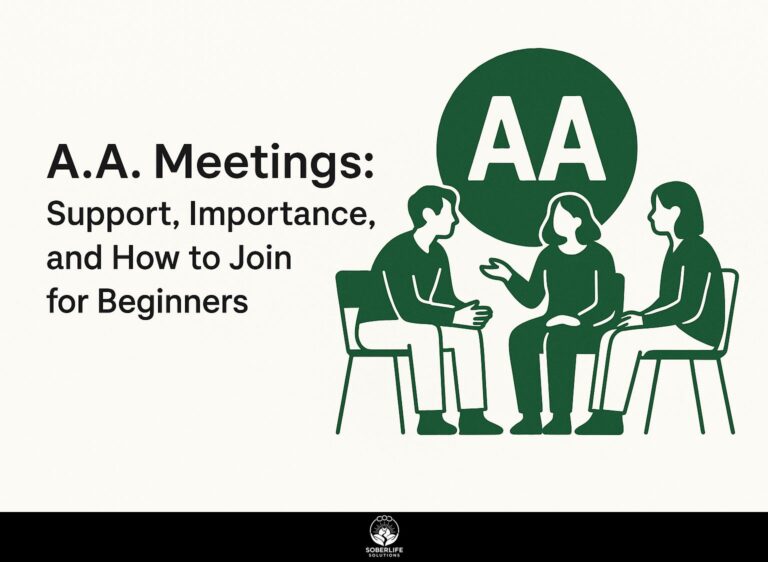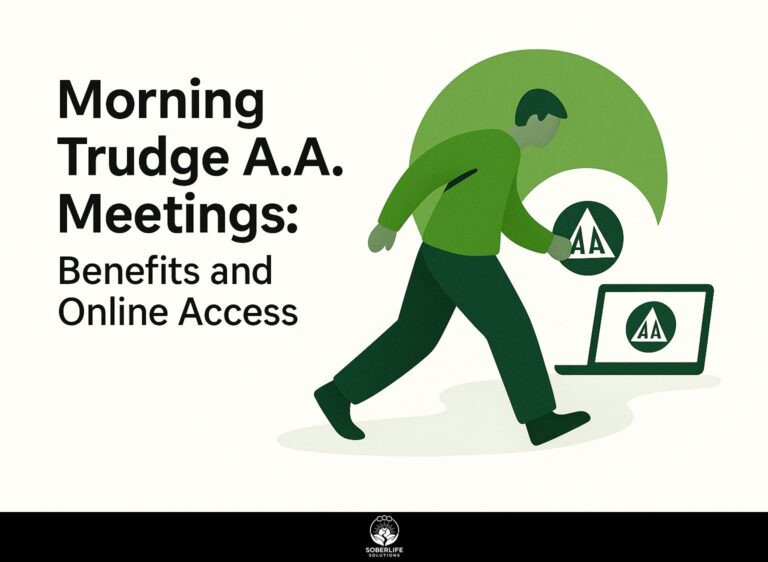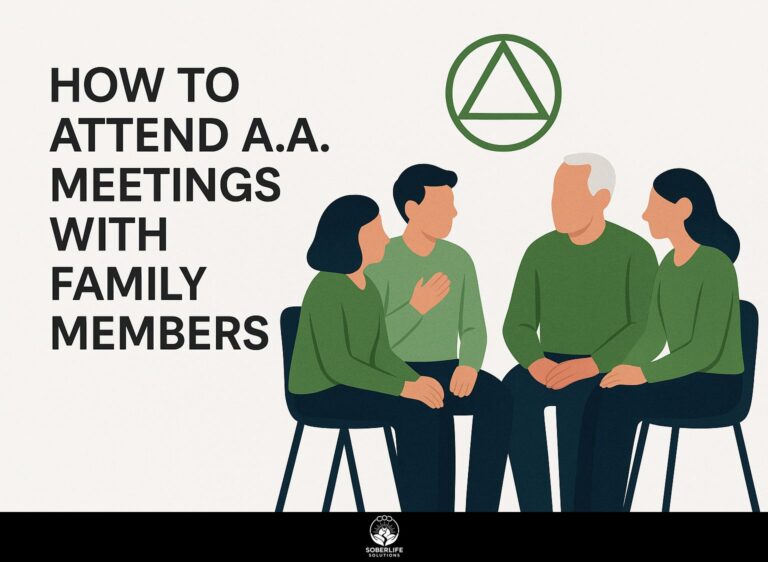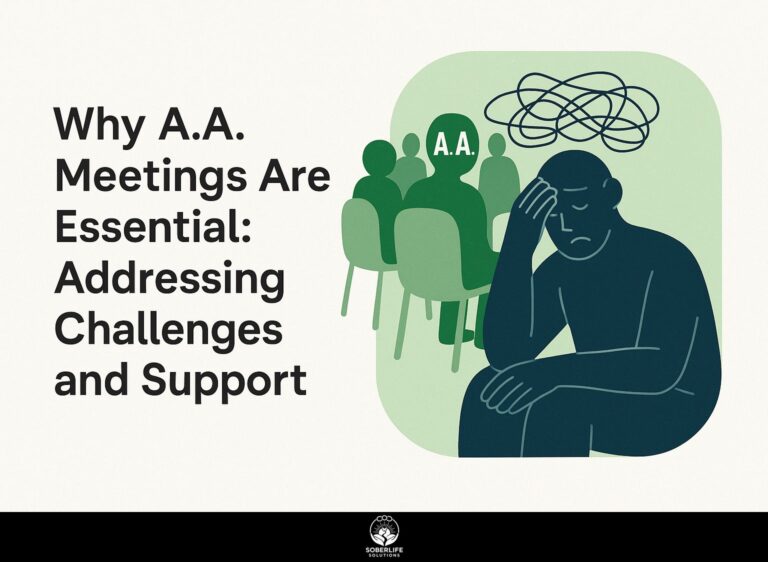Contact Tracing in A.A. Meetings: Purpose and Implementation
As the COVID-19 pandemic changes our lives, contact tracing has become an important part of public health, especially in A.A. meetings. Following guidelines from the Centers for Disease Control and Prevention (CDC) and put into practice in states like Pennsylvania, these methods help limit the spread of the virus while maintaining necessary isolation measures. This article looks at the role and effective use of contact tracing in Alcoholics Anonymous, emphasizing its importance for the safety and support of the community.
Key Takeaways:
- Contact tracing in A.A. meetings improves health and safety by finding out who may have been exposed, helping to safeguard members and the community.
- Implementing effective contact tracing strategies can involve both technology and manual tracking to suit different meeting environments.
- Teaching and training leaders and team members is essential to tackle privacy issues and promote involvement in contact tracing activities.
Definition and Importance
Contact tracing involves identifying individuals who have been in close contact with someone diagnosed with a contagious disease, essential for controlling outbreaks.
This proactive strategy significantly mitigates transmission rates; studies indicate an 80% reduction when executed effectively. Research published in Proceedings of the National Academy of Sciences highlights the effectiveness of COVID-19 testing and contact tracing in reducing transmission.
To implement contact tracing, public health officials typically use interviews to ascertain exposure history and mobile apps can help log interactions securely.
For instance, digital tools like COVID Alert and Apple-Google’s exposure notification system allow users to receive alerts if they have been near an infected individual.
Clear communication and community support improve the tracing process, which helps promote healthier populations.
Relevance to A.A. Meetings
In A.A. meetings, contact tracing is important for keeping participants safe by quickly finding out if anyone has been exposed to illness in a group environment.
Set up a sign-in sheet at each meeting to record who is present. This helps organizers contact attendees if there is a COVID-19 exposure.
For instance, after a recent outbreak, a local group successfully notified 15 participants, preventing further transmission.
Consider using apps like COVID Alert or resources from your local health department to simplify things. Continue to share information about safety practices, such as wearing masks and maintaining distance, to emphasize the importance of safety during recovery and to create a supportive community.
Purpose of Contact Tracing in A.A.
The main purpose of contact tracing in A.A. meetings is to protect health and safety while promoting a sense of responsibility among members. This practice aligns with guidelines provided by the Centers for Disease Control and Prevention (CDC) on infection control, ensuring that gatherings remain safe.
Health and Safety Considerations
Health and safety measures, including contact tracing, can mitigate the risk of COVID-19 transmission among A.A. members by ensuring timely notifications of exposure.
To improve contact tracing, it’s important to put in place clear and complete guidelines.
- Begin with thorough quarantine measures for individuals exposed to a confirmed case-ideally, they should isolate for 14 days.
- Increase testing capacity by collaborating with local health departments to facilitate regular testing for members, especially after potential exposures.
- Teach volunteers how to accurately collect and record data to make sure reports are correct.
- According to guidelines from the Centers for Disease Control and Prevention (CDC), provide clear communication channels for reporting symptoms, and consider utilizing technology like mobile apps for faster exposure notifications.
Community Responsibility
Contact tracing shows how a community works together to safeguard its members, particularly during health emergencies.
Collaborative efforts strengthen contact tracing initiatives and improve community health outcomes.
Local health departments can work together with community organizations, like churches or schools, to improve how they gather and share information. Using tools like WhatsApp groups or community bulletin boards can help share timely updates about safety measures.
Effective programs, such as the one in a Chicago neighborhood, used local leaders to share information, resulting in a 30% rise in testing rates and faster detection of outbreaks.
Involving residents builds trust and promotes proactive health habits, which helps the whole community.
Implementation Strategies
Successful contact tracing in A.A. meetings needs careful planning and the use of technology along with manual tracking methods.
Technology Utilization
Using technology like mobile apps and databases improves contact tracing by automatically sending notifications and tracking possible exposures.
For instance, tools like COVID Trace, which integrates seamlessly with local health department APIs, send real-time alerts to users about potential exposure based on location data.
Public Health Agency apps often employ symptom-checking features, allowing users to report their health status directly.
To implement these technologies successfully, local health departments can collaborate with app developers to customize features that meet community needs, ensuring timely updates and effective communication during outbreaks.
Manual Tracking Methods
Manual tracking methods, including logs and telephone scripts, remain a viable option for contact tracing in A.A. meetings, especially in areas with less technological access.
To effectively implement manual tracking, start by creating a simple log template where you can record the date, meeting location, and attendees. For instance, use a spreadsheet with columns for each detail.
Develop a clear telephone script for outreach. A basic script could include:
- ‘Hello, I’m [Your Name] from [A.A. Group].
- I’m reaching out to confirm your attendance for contact tracing purposes.
- Can you please confirm your participation in our recent meeting?’
This method enables careful tracking and strengthens relationships between members.
Challenges and Barriers
Contact tracing works well, but we need to tackle various challenges to make it successful in A.A. meetings.
Privacy Concerns
Privacy concerns can hinder the effectiveness of contact tracing initiatives, particularly regarding the sensitivity of health information shared among A.A. members.
To protect privacy, use methods like data masking or removing personal details. For example, software such as k-anonymity can help keep individual identities hidden in data sets.
Being open about how data is used is important. Clearly explain how information will be collected, kept, and shared. Regularly checking these practices can increase trust.
Consider implementing encryption protocols to secure sensitive communications, ensuring that the privacy of A.A. members is upheld while effectively facilitating contact tracing efforts.
Resistance from Members
Resistance from A.A. members towards contact tracing initiatives can impede effective implementation and must be addressed through education and community involvement.
To effectively communicate the benefits of contact tracing, share clear examples of its success in similar communities, such as how it helped reduce COVID-19 transmission in local health initiatives.
Host informational sessions where members can ask questions and express concerns, creating a safe space for dialogue.
Collaborate with trusted A.A. leaders to endorse the initiative, which can bridge cultural gaps and increase trust.
Using images, such as infographics, can help explain why contact tracing is important in a clear way.
Training and Education
Training and education are essential for A.A. leaders and members to carry out contact tracing protocols and recognize their importance. For detailed strategies on how to implement these protocols effectively, consider our guide on accessible A.A. meetings, which offers insights into creating inclusive environments that facilitate education and support.
Workshops for Leaders
Workshops designed for A.A. leaders can equip them with the necessary skills to manage contact tracing initiatives effectively within their groups.
During these workshops, facilitators can cover practical topics such as how to implement contact tracing procedures, using tools like Google Forms to track meeting attendance, and ensuring any necessary confidentiality.
A local health organization hosted a workshop that helped leaders develop contact logs with clear privacy rules, easing concerns among participants. The sessions included guidance on using apps like COVID Alert to simplify contact notifications, allowing leaders to feel informed and supported in their responsibilities.
Informational Resources for Members
Giving A.A. members easy-to-understand information helps them learn about and accept contact tracing measures.
To support A.A. members, consider distributing pamphlets that simplify contact tracing, outlining its purpose and benefits.
Videos that explain the process can capture viewers’ attention and make the information simpler to understand.
Online courses or webinars, perhaps hosted on platforms like Zoom, can facilitate deeper discussions and address concerns in real-time.
Collect feedback on these resources through surveys or casual group talks to ensure that future materials fit the needs and preferences of the members.
This open approach can greatly improve education and encourage a feeling of belonging.
Case Studies and Best Practices
Looking at examples of effective contact tracing in similar groups can offer helpful information and useful methods for A.A. meetings.
Successful Implementations
Many organizations have successfully used contact tracing programs to manage COVID-19 outbreaks among their members.
The Massachusetts Department of Public Health worked with local groups to set up a contact tracing plan. By using 300 contact tracers, they were able to lower case rates by 30% in three months.
The University of California used a special app to simplify reporting and tracking, which greatly sped up their response times.
Community partners were essential in teaching the public about the value of contact tracing, motivating people to take part willingly, and building trust, which was important for their success.
Lessons Learned
Lessons learned from previous contact tracing initiatives can guide A.A. meetings in avoiding pitfalls and enhancing community engagement.
To encourage members to get involved, A.A. meetings should focus on being clear about how they operate.
For instance, employing digital tools like Zoom can facilitate remote attendance, ensuring that those reluctant to join in person feel included.
Setting up anonymous feedback surveys using Google Forms can help organizers understand member concerns and suggestions.
Regularly communicating updates via emails or newsletters keeps the community informed and involved.
By promoting open communication and flexibility, A.A. can build a supportive environment that invites involvement and strengthens relationships among its members.
Frequently Asked Questions
What is the purpose of Contact Tracing in A.A. Meetings?
The purpose of Contact Tracing in A.A. Meetings is to help identify individuals who may have been exposed to COVID-19 during meetings, ensuring the safety and health of all participants. By tracking potential exposures, the A.A. community can take necessary precautions to prevent the spread of the virus and maintain a supportive environment for recovery.
How is Contact Tracing implemented in A.A. Meetings?
Contact Tracing in A.A. Meetings is implemented by maintaining a record of attendees, including contact information, in a manner that protects privacy. Meeting organizers may ask for participants’ permission to collect this information, which can be used to notify attendees if someone tests positive for COVID-19 after attending the meeting.
What steps should A.A. groups follow to make Contact Tracing work well?
A.A. groups should establish clear protocols for Contact Tracing in A.A. Meetings. This includes consistently recording attendance, informing members about the purpose of the data collection, ensuring confidentiality, and having a plan in place to communicate with attendees if a positive case is reported.
Are there privacy concerns related to Contact Tracing in A.A. Meetings?
There are privacy concerns about Contact Tracing in A.A. Meetings. It is important for groups to manage personal information carefully, making sure that any data collected is kept safe and used only to track possible COVID-19 exposures. Members should know how their information will be used and who can see it.
What should I do if I test positive after attending an A.A. Meeting?
If you test positive for COVID-19 after attending an A.A. Meeting, it is important to notify the meeting organizers as soon as possible. This will enable them to follow the Contact Tracing in A.A. Meetings: Purpose and Implementation guidelines and inform other attendees about potential exposure, while maintaining confidentiality.
How can A.A. members support Contact Tracing efforts?
A.A. members can help with Contact Tracing by sharing their health status, recognizing how important tracing is for the safety of the community, and working with meeting organizers to provide their contact information. This group effort is essential for the health of everyone attending A.A. Meetings.





